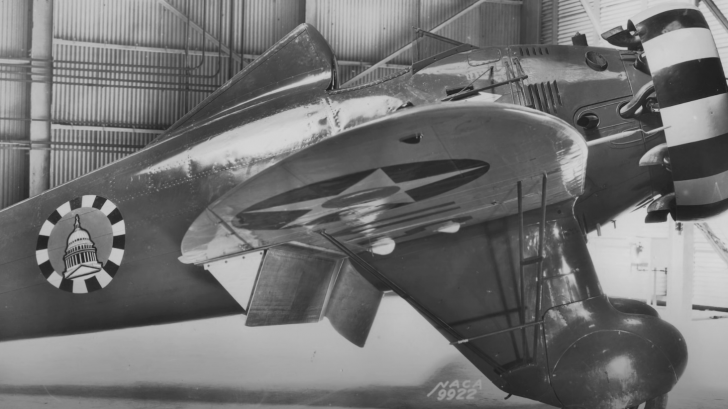The Boeing P-26 ‘Peashooter’ was an American-built single-seat fighter aircraft that entered service in the 1930s. It became the first all-metal monoplane fighter operated by the US Army Air Corps, ushering in a new era in military aviation.
From The Start
The P-26 was a design created in response to a USAAC requirement for a new fighter aircraft that could reach a speed of at least 200 mph. Boeing would eventually win the contract with their Model 248 design, which featured a streamlined fuselage, retractable landing gear, and an enclosed cockpit. Furthermore, the planned aircraft was powered by a Pratt & Whitney R-1340-27 engine that produced 600 hp, allowing it to reach a top speed of 234 mph.
It made its first flight on March 20, 1932, and quickly entered service in 1934. Soon enough, the Peashooter became a popular aircraft among fighter pilots with many favoring its maneuverability and speed.
Short Service
The P-26 served with the USAAC from 1934 to 1941 and saw action in several conflicts during this time. American Volunteer Group, the “Flying Tigers”, flew the Peashooter during the Second Sino-Japanese War. Moreover, the monoplane was operated by the Philippine Air Force in 1941, where it was already outmatched by Japanese Zeroes.
Despite its limitations, the P-26 remained in service with some National Guard units until 1942. It was eventually replaced by more advanced fighter aircraft, such as the P-40 Warhawk and the P-38 Lightning.
Several Important Contributions
Although the P-26 was outperformed by more advanced fighter aircraft, it made several important contributions to aviation technology. One of its major accomplishments was the development of the pursuit curve theory, which was used to analyze the performance of fighter aircraft. This theory was developed by USAAC pilot Benjamin S. Kelsey, who used the P-26 to collect data on the aircraft’s turning performance.
The P-26 also set several speed and altitude records during its service. In 1934, a P-26 flown by USAAC pilot Lt. Muir S. Fairchild set a world speed record of 234 mph. The P-26 was also used to set altitude records, with a P-26 flown by pilot J.H. MacArthur reaching an altitude of 37,900 feet in 1935.
Interestingly, the Peashooter also played a role in the development of air-to-air refueling. In 1935, a P-26 was successfully refueled mid-air by a Boeing 707 tanker aircraft, marking the first time that a fighter aircraft had been refueled in flight.
Not Just A Small Blip In History
The Peashooter represented a major advancement in technology as the first all-metal monoplane fighter used by the USAAC. Although it was quickly outclassed, it still made several contributions to technology, including the development of the pursuit curve theory and the use of air-to-air refueling. The P-26 also served as the basis for the development of several other fighter aircraft, including the Curtiss P-36 Hawk and the Republic P-43 Lancer.



